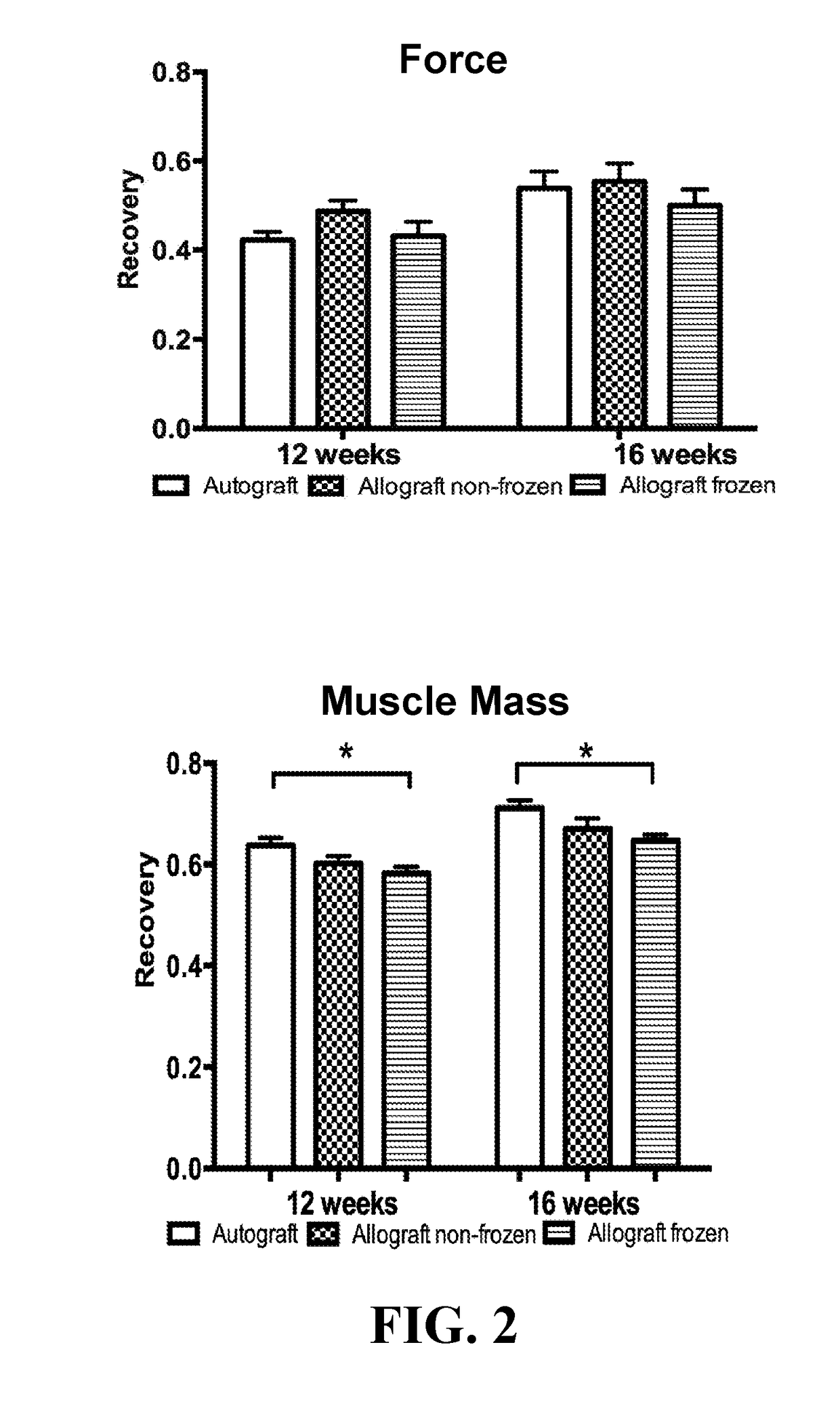Decellularized nerve allografts
- Summary
- Abstract
- Description
- Claims
- Application Information
AI Technical Summary
Benefits of technology
Problems solved by technology
Method used
Image
Examples
example 1
Motor Function Using a Decellularized Nerve Allograft
Animals
[0027]66 Lewis rats (weighing 250-300 grams) were used, and 22 Sprague Dawley rats served as full major histocompatibility complex mismatch nerve donors. Lewis rats were used as they are known for their reduced tendency for autotomy (Carr et al., Annals Plast. Surg., 28(6):538-44 (1992)). Animals were randomly divided into three groups each treated for a 10 mm sciatic nerve gap. Group I (n=22) had a unilateral nerve gap reconstructed with a processed nerve allograft that was cold stored (‘Allograft Cold’). Group II (n=22) had a similar procedure except the processed allograft was freeze-stored (‘Allograft Frozen’). Group III (n=22) served as a control using a nerve autograft. The rats were given food and water ad libitum and were individually housed with a 12 hour light-dark cycle.
Nerve Processing
[0028]Twenty-two Sprague-Dawley rats, weighing 300-350 grams, were sacrificed with an intraperitoneal injection of pentobarbital ...
example 2
rization Techniques to Create a Nerve Allograft
[0045]Twenty-five Sprague-Dawley rats, weighing 250-350 grams (Harlan, Indianapolis, Ind.), were used. After initial Isoflurane induction, all animals were sacrificed with an overdose of pentobarbital. Bilateral, 15 mm nerve segments of the sciatic nerve were aseptically harvested. A total of 50 nerve segments were collected.
Experimental Design
[0046]A total of 5 groups were compared in this study. All groups consisted of 10 nerves. The first group was processed following a standard protocol based on previous studies (Hudson et al., Tissue Engineering, 10(9-10):1346-58 (2004); Neubauer et al., Exp. Neurol., 207(1):163-70 (2007); and Giusti et al., J. Bone Joint Surg. Am., 7; 94(5):410-7 (2012)). The second and third group underwent the same processing only with the addition of the enzyme elastase in two different time periods (i.e., 8 and 16 hours; Group II and III, respectively). The effect of freeze storage (−80° C.) was also studied i...
PUM
 Login to View More
Login to View More Abstract
Description
Claims
Application Information
 Login to View More
Login to View More - R&D
- Intellectual Property
- Life Sciences
- Materials
- Tech Scout
- Unparalleled Data Quality
- Higher Quality Content
- 60% Fewer Hallucinations
Browse by: Latest US Patents, China's latest patents, Technical Efficacy Thesaurus, Application Domain, Technology Topic, Popular Technical Reports.
© 2025 PatSnap. All rights reserved.Legal|Privacy policy|Modern Slavery Act Transparency Statement|Sitemap|About US| Contact US: help@patsnap.com



